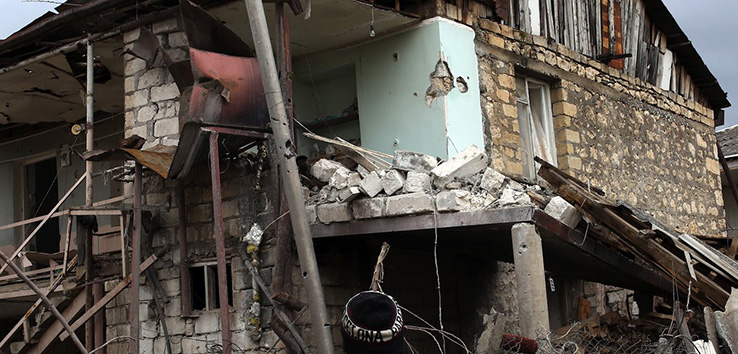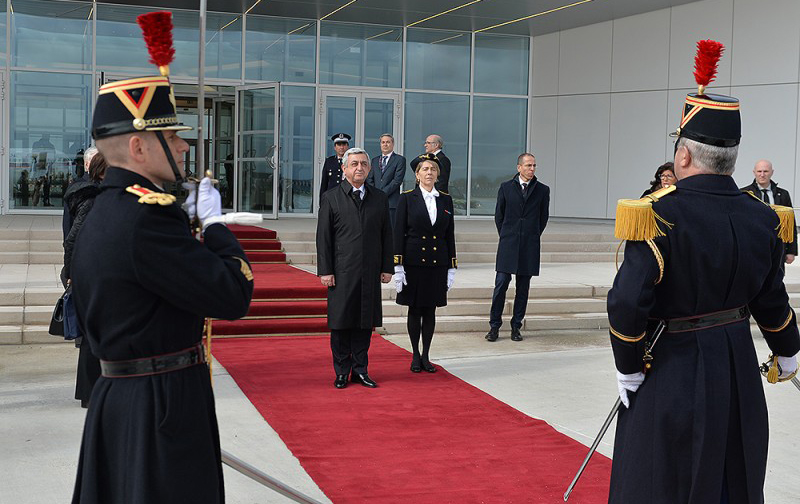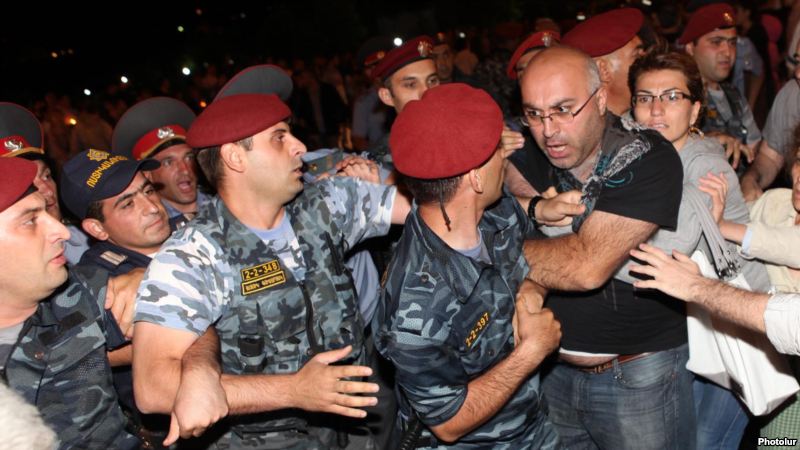By LIAM WADY
(dailytrojan.com)
In front of a group of over twenty faculty members and students, guest speaker Jennifer Manoukian explained that the anxiety surrounding the Armenian language isn’t just a thing of today, but also a thing of the past.
The Dornsife Institute of Armenian Studies, along with the Department of Linguistics and the Center for Languages and Cultures welcomed Manoukian, a UC President’s Postdoctoral Fellow at UC Irvine, on March 28 to give a lecture about the anxieties Armenians have about the longevity of their language and its history.
The lecture comes before the inaugural celebration of Armenian History Month this April, the first ever in the University’s history. The month-long event will feature opening remarks from President Carol Folt as well as a cultural showcase and a screening of Aurora Sunrise. The University has almost 1,000 Armenian students and Los Angeles alone has over 200,000 Armenian residents. This marks L.A. as having the largest population of Armenians outside of Armenia.
In the Dornsife Institute of Armenian Studies office, Manoukian started “Not-So-Contemporary Concerns: Three Centuries of Anxiety over the Fate of Armenian” by explaining that Armenians must look at what they’ve become now while also looking back at what they once were.
Raised in New Jersey’s Armenian community, Manoukian said her curiosity for her culture’s language and history led her to graduate from UCLA with a Ph.D. in near Eastern languages and cultures.
“[G]enerations of Armenians in the past have confronted the very same challenges that we’re facing today,” Manoukian said. “Armenians in the past have learned, used and sometimes even preferred the dominant language of the society around them for the same practical reasons that many Armenians do today.”
Manoukian listed three different reasons for this: Not all Armenians speak Armenian, not all Armenians speak pure Armenian, and not all Armenians can read and write in Armenian.
Jackalyn Karamanougian, a freshman majoring in political science who attended the event, said it was eye-opening that anxieties about the Armenian language have been going on for more than 300 years.
“I thought it was something that only people my age feel and the pressure we feel to speak ‘perfect’ Armenian,” she said. “It was nice to have that reassurance.”
Manoukian discussed the Persian Armenian Diaspora during the 19th century, where Armenian communities in India would shift to the more dominant languages like English. Despite this, Manoukian said Armenians still long to preserve their language because they share the belief that if they lose their language, they lose their identity.
One of the ways Manoukian said Armenians pushed back against the endangerment of their language was by writing bilingual books in the countries they immigrated to. Manoukian said many writers would publish books in Kurdish and Armenian, while some Armenians would write Turkish in the Armenian alphabet. Great lengths were taken to preserve the language.
However, as more Armenians were spreading to different countries, Manoukian said the Armenian language began to blend into the languages of other nations.
“The Armenian spoken in Persia and India is mixed with Persian, Hindi and English. The Armenian spoken in Russia, it’s mixed with Turkish, Tatar and Russian. The ones in Poland and Hungary are mixed with Hungarian,” Manoukian said.
Armenians would shame each other for not speaking the words used in the “pure” Armenian language. In response, many Armenians looked for an alternative, Manoukian said.
“What intellectuals did in the 19th century was they went into classical Armenian dictionaries and texts, and they use the words that they found in them to replace the Turkish borrowing in common parlance,” Manoukian said. “If the word didn’t exist in classical Armenian, and there were many words that didn’t exist in classical Armenian, they could make one with classical roots, or they could invent new ones.”
Manoukian talked about the lack of access to education as many young people were not literate in the Armenian language. Manoukian said intellectuals throughout the 19th century struggled to convince low-income parents to send their boys to Armenian school.
“[I]t wasn’t considered necessary or even desirable,” Manoukian said. “The parents didn’t plan to send their son into the priesthood: What was the point of teaching them how to read?”
At the same time, Manoukian said it was considered dangerous to allow girls to read and write. Many Armenians used to assume that if girls knew how to read and write, they would become lazy mothers. Audience members looked visibly surprised when Manoukian shared a story in which an entire girls’ school was closed because “one girl had written a love letter.”
Even so, after the Armenian genocide, orphanages would sponsor and work with newspapers so orphaned Armenian children could learn how to write and read in Armenian.
Annie Petrosyan, a sophomore majoring in economics, said she hopes that during Armenian History Month, non-Armenians will start to pay more attention to the Armenian student body at USC and its culture’s history.
“The Armenian story is a story of perseverance, especially with the recent exodus of Armenians from their native land,” Karamanougian said. “It’s important for the education system to teach Armenian history — that these people are a people who are still here today and have something valuable to contribute.”
Correction: A previous version of this article misquoted Jennifer Manoukian in stating that 19th-century Armenian intellectuals went into “classifying dictionaries” to replace Turkish borrowing words in common parlance, that if a word didn’t exist in “classical idea,” intellectuals would create a word using classical Armenian roots or invent new ones, and that Armenian language spoken in Russia was mixed with “Turkish Tsar and Russian.” The article also misstated that Manoukian held a Ph.D. in “near languages and cultures,” that speaking multiple languages was a disadvantage in the Armenian community, and did not state that the Dornsife Institute of Armenian Studies co-sponsored the event. The article was updated April 1 at 10:36 p.m. to reflect that Manoukian said intellectuals went into “classical Armenian” to replace Turkish borrowing words, that Armenian language spoken in Russia was mixed with “Turkish, Tatar and Russian,” and that if the word didn’t exist in “classical Armenian,” they would create a new one. The article was also updated to reflect that Manoukian holds a Ph.D. in near Eastern languages and cultures, and that the Dornsife Institute of Armenian Studies co-sponsored the event. The Daily Trojan regrets these errors.











1 comment
Given the initial reporting errors related to this article, did Manoukian really say, “many writers would publish books in Kurdish and Armenian”? The key word here being “many”, especially for Kurdish?